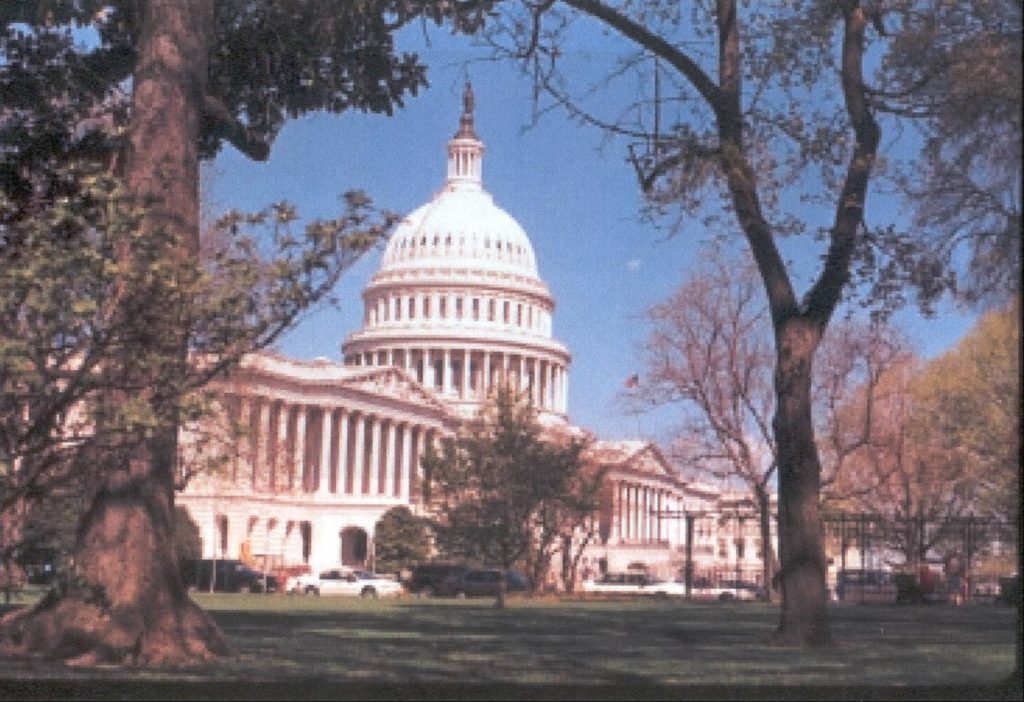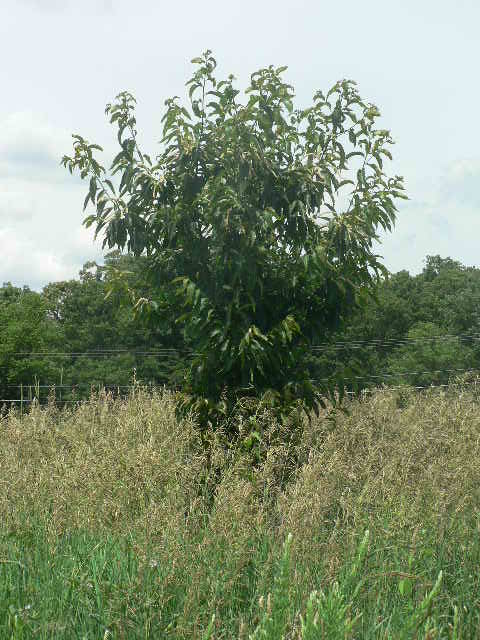
As I have written often, inadequate funding is a major cause of shortfalls in USDA APHIS’ efforts to detect new invasions by tree-killing pests and to respond to those invasions in effective ways. So, I ask you to contact your Representative and Senators in support of appropriations for APHIS and –National Institute for Food and Agriculture (NIFA) for the next fiscal year – (FY)2020.
APHIS’ efforts to detect and respond to non-native tree-killing pests were rudely interrupted by the five-week Government Shutdown from 22 December until late January. While inspection of incoming shipments continued, U.S.-based activities were halted. Chaos and confusion continued until 15 February, when the President signed legislation that funds APHIS (and other government agencies) until the end of September – the remainder of FY2919.
Surprise! The funding bill provides increased funds for two key APHIS programs:
- $60 million for the “tree and wood pests” program — $4 million above the funding provided in recent years; and
- $186 million for “specialty crop” pests (including sudden oak death) — $7.8 million above recent levels.
I ask you to ask the Congress to maintain these funding levels for these budget “lines”.
I ask you also to support continuing the FY19 levels for two other programs:
- Methods Development — $27.4 million; and
- “Detection Funding” – $20. 7 million.
New this year, I hope you will support a $10 million appropriation to the National Institute of Food and Agriculture to fund a competitive grant program intended to restore to forests tree species significantly damaged by non-native insects and plant pathogens.
Justification for the Funding Requests
As we know, non-native insects and pathogens that threaten native tree species have been and continue to be introduced to the United States. These pests impose significant costs: Aukema et al. 2011 (full reference at the end of the blog) estimated
- municipal governments spend more than $2 billion per year to remove trees on city property that have been killed by these pests.
- homeowners spend $1 billion every year to remove and replace trees on their properties
- homeowners absorb an additional $1.5 billion in reduced property values.
Costs are rising: the polyphagous and Kuroshio shot hole borers are projected to cost municipalities and homeowners in California $36.2 billion if their further spread is not prevented (McPherson 2017)
When you contact your Representative or Senators, tell them about the impact of non-native pests in your location!
The significant ecological impacts are poorly quantified.
USDA APHIS is responsible for preventing such pests’ entry, detecting newly introduced pests, and initiating rapid eradication programs. Yet, despite rising risks of pest introduction commensurate with rising import volumes, funding for APHIS’ program targetting the “tree and wood pests” associated with crates and pallets has remained at or below $55 million since FY2012 – until the modest increase last year to $60 million. Among the forest pests detected during this period are the spotted lanternfly and here and Kuroshio shot hole borer.
Among the pests probably introduced on a second pathway, imports of living plants, are the two pathogens threatening Hawaii’s most widespread tree, ʻōhiʻa lehua and here, and beech leaf disease and here in the Northeastern states. The better-funded “specialty crops” account could help fund responses to these damaging pathogens.
Ask your Congressional representatives to urge APHIS to apply part of the increased funding for the “tree and wood pest” program to continue the regulatory program for the emerald ash borer (EAB) and here. In September, APHIS has proposed to terminate the EAB regulatory program. Program termination would greatly increase the risk that EAB will spread to the mountain and Pacific Coast states. California has five native species of ash vulnerable to EAB. Ash trees provide a higher percentage (8%) of Los Angeles’ tree canopy than any other species. This proportion will rise as other tree species succumb to the polyphagous and Kuroshio shot hole borers. Oregon’s one native species of ash is widespread in riparian areas and many urban plantings consist of ash. Ash trees are the fifth most common genus among Portland’s urban trees. Many stakeholders have urged APHIS to continue to regulate movement of firewood and other materials that facilitate EAB’s spread.
The “Specialty Crops” program currently funds APHIS’ regulation of nursery operations to prevent spread of the sudden oak death pathogen. In future, this budget line would be the logical source of funds to manage the spotted lanternfly, which has been carried out through a combination of emergency funding under 7 U.S.C. §7772 and grants funded through the Plant Pest and Disease Management and Disaster Program (§7721 of the Plant Protection Act). (See below.)
Ask your Congressional representatives to support continued funding of APHIS’ “Methods Development” program at the FY19 level of $27.4 million. This program assists APHIS in developing detection and eradication tools essential for an effective response to new pests.
Similarly, ask your Congressional representatives to support continued funding of the “Detection” budget line at the FY19 level of $20.7 million. This program supports the critically important collaborative state –federal program pest-detection program that is critical to successful eradication and containment programs.
APHIS’ Additional sources of funds
APHIS has always had authority to obtain “emergency” funds through 7 U.S.C. §7772. Emergency funds come from permanent USDA funding; they are not subject to annual appropriations. This authority has been tightly controlled by the Office of Management and Budget; I believe the last time APHIS obtained “emergency” funds for a tree pest was the emerald ash borer a decade or more ago. A year ago, APHIS accessed $17 million in emergency funding to address the expanding spotted lanternfly outbreak [USDA Press Release No. 0031.18 February 7, 2018] and OMB also requires that APHIS quickly transfer programs started with emergency funds to the regular budget. As I note above, response to the expanding spotted lanternfly outbreak should logically be shifted to the “specialty crops” budget account.
For a decade, APHIS has had access to a separate source of funds: the Plant Pest and Disease Management and Disaster Prevention Program. This program is also funded through permanent funds, not subject to the vagaries of annual budgeting and appropriations. Until last year, this program operated under Section 10007 of the 2014 Farm Bill; with passage of a new Farm Bill last year, it is now designated as Section 7721 of the Plant Protection Act. Beginning in Fiscal Year 2018, APHIS has authority to spend up to $75 million per year.
Funds are provided under a competitive grants program to universities, states, Federal agencies, nongovernmental organizations, non-profits, and Tribal organizations “to conduct critical projects that keep U.S. crops, nurseries, and forests healthy, boost the marketability of agricultural products within the country and abroad, and help us do right and feed everyone.” [USDA press release “USDA Provides $66 Million in Fiscal Year 2019 to Protect Agriculture and Natural Resources from Plant Pests and Diseases” February 15, 2019]
Over the decade since the program began, it has funded, but my calculation, about $77 million in projects targetting tree-killing pests. The proportion of total program funding allocated to tree-killing pests has risen in the most recent years, driven largely by funding to counter the spotted lanternfly outbreak which began in Pennsylvania but has since spread (see above). In the current year (FY2019), APHIS used this program to fund $10 million in projects to address the spotted lanternfly. The SLF funds equaled 57% of the total funding for tree pests provided under the program in FY2019.
Implications of the Tangle of Funding Sources
What is the significance of funding programs through the Plant Pest and Disease Management and Disaster Prevention Program as distinct from appropriated funds? Clearly, having access to $75 million that is not subject to the limits imposed by Administration budget priorities or Congressional appropriations allows considerable freedom. Does this freedom allow APHIS to support work on pests that might not qualify to be “quarantine” pests? For example, under the Plant Protection Act, APHIS normally does not engage on pests found only in one state. The polyphagous and Kuroshio shot hole borers fall into this category. So did the spotted lanternfly for the first several years – until its detection in Delaware and Virginia in late 2017. If so, then the presence of the lanternfly in several states would seem now to indicate that funding sources should be shifted – at least in part – to appropriated funds. But would such a shift result in less funding – a result I think would be most unwise!
The beech leaf disease doesn’t clearly qualify for designation as a “quarantine pest” because of the uncertainty about the causal agent. So far, there has been no Section 7721 funding to support efforts to identify the causal agent or to improve detection or curtail spread of the disease.

Funding for Resistance Breeding through NIFA
As we know, dozens of America’s tree species have been severely reduced or virtually eliminated from significant parts of their ranges by non-native insects and pathogens. Last year’s Farm Bill – the Agriculture Improvement Act of 2018 – included an amendment (Section 8708) that establishes a new priority for an existing grant program to support restoration to the forest of native tree species that have suffered severe levels of mortality caused by non-native insects, plant pathogens, or other pests. Grant-receiving programs would incorporate one or more of the following components: collection and conservation of native tree genetic material; production of sufficiently numerous propagules to support landscape-scale restoration; and planting and maintenance of seedlings in the landscape.
In January a panel of the National Academies of Sciences, Engineering, and Medicine recommended that the U.S. apply multifaceted approaches to combat these threats to forest health. One component strategy is breeding of trees resistant to the pest.
Ask Congress to begin applying the Academies’ recommendation by providing $10 million to NIFA to fund the Competitive Forestry, Natural Resources, and Environmental Grants Program under Section 1232(c)(2) of the Food, Agriculture, Conservation, and Trade Act of 1990 (16 U.S.C. 582A-8, as amended.
I hope everyone will contact your Representative and Senators. If your Congressional representative is listed below, your contact is particularly helpful because these are the members of the House or Senate Agriculture Appropriations subcommittees – the people with the greatest influence over what gets funded:
House Agriculture Appropriations subcommittee members:
- Sanford Bishop Jr., Chairman
- Rosa DeLauro CT
- Chellie Pingree ME
- Mark Pocan WI
- Barbara Lee CA
- Betty McCollum MN
- Henry Cuellar TX
- Jeff Fortenberry, Ranking Member NE
- Robert Aderholt AL
- Andy Harris MD
- John Moolenaar MI
Senate Agriculture Appropriations subcommittee members:
- John Hoeven, Chairman ND
- Mitch McConnell KY
- Susan Collins ME
- Roy Blunt MO
- Jerry Moran KS
- Cindy Hyde-Smith MS
- John Kennedy LA
- Jeff Merkley OR
- Dianne Feinstein CA
- Jon Tester MT
- Tom Udall NM
- Patrick Leahy VT
- Tammy Baldwin WI
SOURCES
Aukema, J.E., B. Leung, K. Kovacs, C. Chivers, K. O. Britton, J. Englin, S.J. Frankel, R. G. Haight, T. P. Holmes, A. Liebhold, D.G. McCullough, B. Von Holle.. 2011. Economic Impacts of Non-Native Forest Insects in the Continental United States PLoS One September 2011 (Volume 6 Issue 9)
McPherson, Gregory. September 28, 2017. Memorandum to John Kabashima re: Potential Impact of ISHB-FD on Urban Forests of Southern California